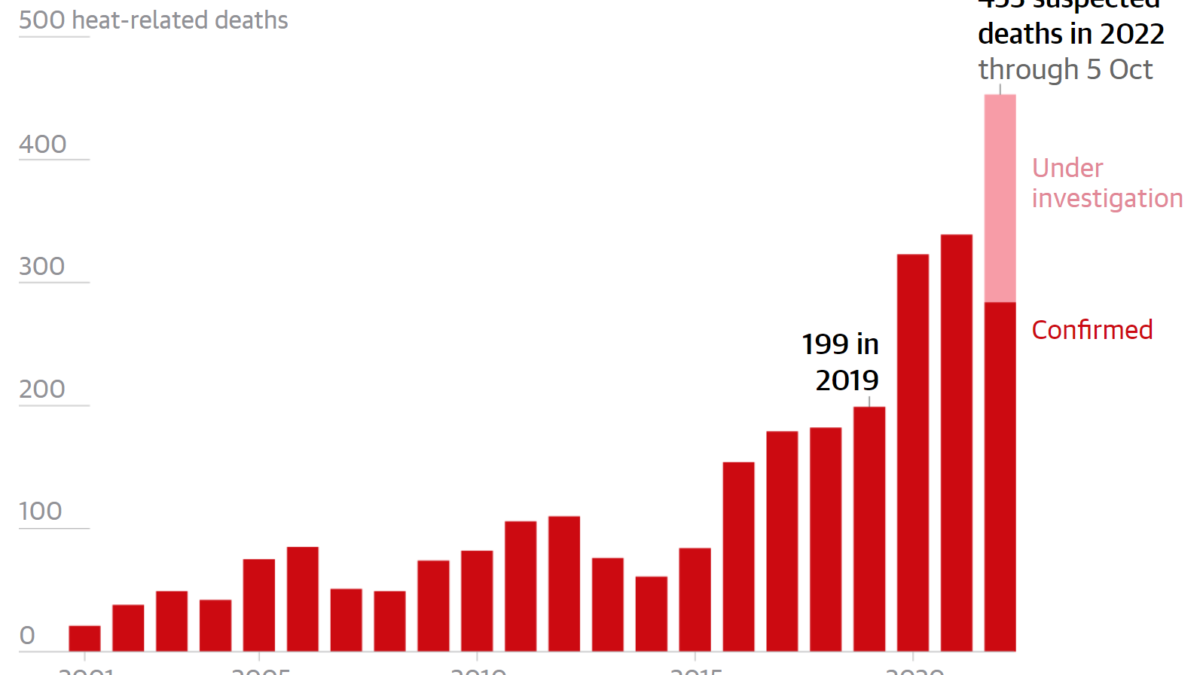Homelessness in U.S. rose to record level in 2023, government says – “Without a significant policy response, this problem will continue to get worse”

By Jason DeParle
15 December 2023
(The New York Times) – Homelessness surged this year to the highest level on record, the federal government reported on Friday.
An annual head count, conducted in January, found the homeless population had increased by more than 70,000 people, or 12 percent. That is the largest one-year jump since the Department of Housing and Urban Development began collecting data in 2007, and the increase affected all parts of the homeless population.
Biden administration officials and academic experts said the increase reflected both a sharp rise in rents and the end of the extraordinary measures the government had enacted during the pandemic, including emergency rental aid and bans on eviction.
“The most significant causes are the shortage of affordable homes and the high cost of housing,” said Jeff Olivet, head of the United States Interagency Council on Homelessness.
Since the start of the pandemic, the cost of basic shelter has risen more than 20 percent, according to federal estimates called fair market rents.
But some researchers said that the rise in homelessness also stemmed from the growing number of migrants entering the homeless services system. That trend has only intensified since the count was taken, as Republican governors, especially Greg Abbott in Texas, have sent more people who have arrived from across the border to Northern cities.

Some of the sharpest growth in homelessness has occurred in the cities most affected by the influx of migrants, including New York, Denver and Chicago.
“Even without the migrant crisis we would have seen some increase, but certainly not to this extent,” said Dennis Culhane, a professor at the University of Pennsylvania who has long served as an adviser to the federal government’s annual count.
“This is partly a manufactured problem,” he added, because the migrants could have been treated outside more humanely outside the homeless services system in areas where they had arrived.
By the government’s count, 653,104 people in the United States were homeless in January.
Homelessness grew among every group the federal government tracks. It rose among individuals and families with children. It rose among the young and the old. It rose among the chronically homeless and those entering the system for the first time.
It also rose among veterans, the group that in recent years had experienced the sharpest declines, after a significant expansion of federal aid.
The report coincides with increasingly sharp political clashes over homelessness and is likely to quicken the debate between progressives who seek more aid and conservatives who seek stricter programs and policing. […]

“What I don’t want to see happen is people pointing to this count and saying the homeless system doesn’t work,” said Ann Oliva, who runs the National Alliance to End Homelessness, an advocacy group. “The biggest driver of these numbers is the lack of affordable housing.”
A growing body of research has shown that growing rent burdens lead to increased homelessness. Federal housing aid reaches only about one in four eligible households, and the share of households who pay more than half their income for shelter is at a record high.
From 2007 to 2016, homelessness fell every year, by a total of 15 percent. It then rose by about 6 percent in the years before the 2020 coronavirus pandemic. The one-year rise of 70,000 in 2023 is more than four times greater than any previous increase.
“Rents went up in lots of places during the pandemic, but we prevented a massive dislocation, largely due to the moratorium on evictions,” said Gregg Colburn, a professor of real estate at the University of Washington. “Without a significant policy response, this problem will continue to get worse.” [more]
Homelessness Rose to Record Level This Year, Government Says


